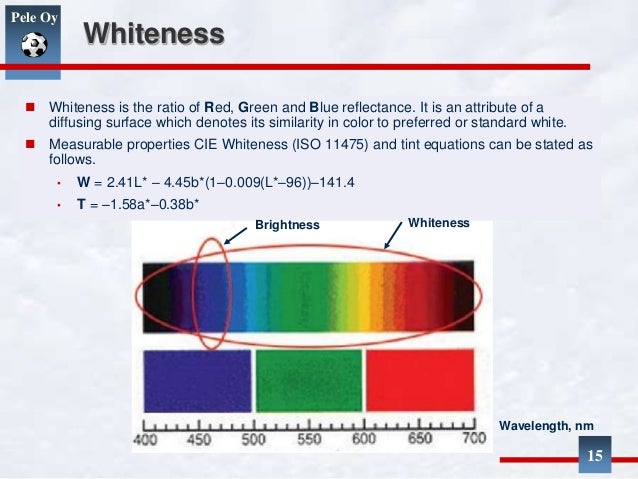Tappi Versus Iso Brightness To Ge
| WikiProject Physics | (Rated Start-class, Low-importance) | |||||||
|---|---|---|---|---|---|---|---|---|
| ||||||||


Papers with a higher brightness allow colors to stand out, while lower-brightness papers are easier on the eyes for reading or extended viewing. Every white paper has its own brightness, which is measured on a brightmeter machine, known in the U.S. As the (TAPPI) GE scale. European, Asian and other.
| WikiProject Measurement | (Rated Start-class) | |||||||
|---|---|---|---|---|---|---|---|---|
| ||||||||
This page is incorrect. It misses completely the use of brightness as a term in astronomy used to discuss the irradiance or radiant emittance from a star and measured in W/m^2.
Tappi Brightness Method
Brightness is correctly defined as a lowercase b and is equal to the luminosity of the star, L, divided by 4 * pi * r^2 where r is the distance from the star to the surface the brightness is being measured.
- This is a similar problem with luminosity, as astronomy and color theory both claim the same words. I.m.o., make a disambiguation page for the definition in astronomy. 217.122.183.107 (talk) 17:04, 11 April 2013 (UTC)
- Brightness is also a technical term used in the paper industry, where it apparently means something like luminance. The three standards for defining and measuring it are TAPPI Standard T451 (more commonly known as GE), ISO Standard 2469 (or ISO for short) and something called D65. When you buy a ream of copier paper in the USA, the label will have something like: 'Domtar First Choice MultiUse Copy Paper - Legal - 8.5' x 14' - 24lb - Smooth - 98 GE/114 ISO Brightness - 5000 / Carton - White' In the TAPPI method, nearly all uv is filtered out of the grading lamps, while the ISO standard simulates daylight. The Optical Brightening Agents in white paper exhibit very strong blue fluorescence. In the paper industry, brightness is measured in a 40 nm band centered around 457 nm. This is how paper can have an albedo greater than 100%. Zyxwv99 (talk) 15:24, 2 May 2013 (UTC)
Federal standard relevance[edit]
Does that (old version of a) federal telecommunications standard in reference 2 really matter that much?From a quick survey it seems that there are other accepted definitions in colorimetry and photometry of lightness and brightness.
Also see Talk:Lightness - Ridiculous youtube reference , I don't think these articles were made by competent people.
Gabrolf (talk) 15:07, 26 January 2017 (UTC)
Iso Vs Ge Brightness
It seems a contradiction in the entry to say that it is both 'subjective' and also 'absolute,' which implies perfect objectivity. The author seems to be confusing 'brightness,' which describes something perceived, with 'luminance,' which is a measure of the amount light reflected or emitted by a surface, which we can measure with instruments. — Preceding unsigned comment added by Gitchygoomy (talk • contribs) 07:25, 17 March 2017 (UTC)